Montrealers are heading to the polls on November 2 to elect a new mayor. While the citizens have the democratic privilege of voting, the Dead certainly do not. As such, Haunted Montreal will be representing them and making demands to the mayoral candidates on their behalf. Generally-speaking, the Dead want two things: to be remembered and to be respected.
Welcome to the seventy-fourth installment of the Haunted Montreal Blog!
We are thrilled to announce the Hallowe’en Season is upon us!
With over 500 documented ghost stories, Montreal is easily the most haunted city in Canada, if not all of North America. Haunted Montreal dedicates itself to researching these paranormal tales, and the Haunted Montreal Blog unveils a newly researched Montreal ghost story on the 13th of every month!
This service is free and you can sign up to our mailing list (top, right-hand corner for desktops and at the bottom for mobile devices) if you wish to receive it every month on the 13th!

This Hallowe’en Season we are offering all of our outdoor ghost tours and haunted experiences:
Haunted Griffintown Ghost Walk
Paranormal Investigation in the Old Sainte Antoine Cemetery
The Hallowe’en Season schedule is posted below in the Company News section.
We are also offering our Virtual Ghost Tour on demand!
Both public and private sessions are available for all of our tours and experiences!
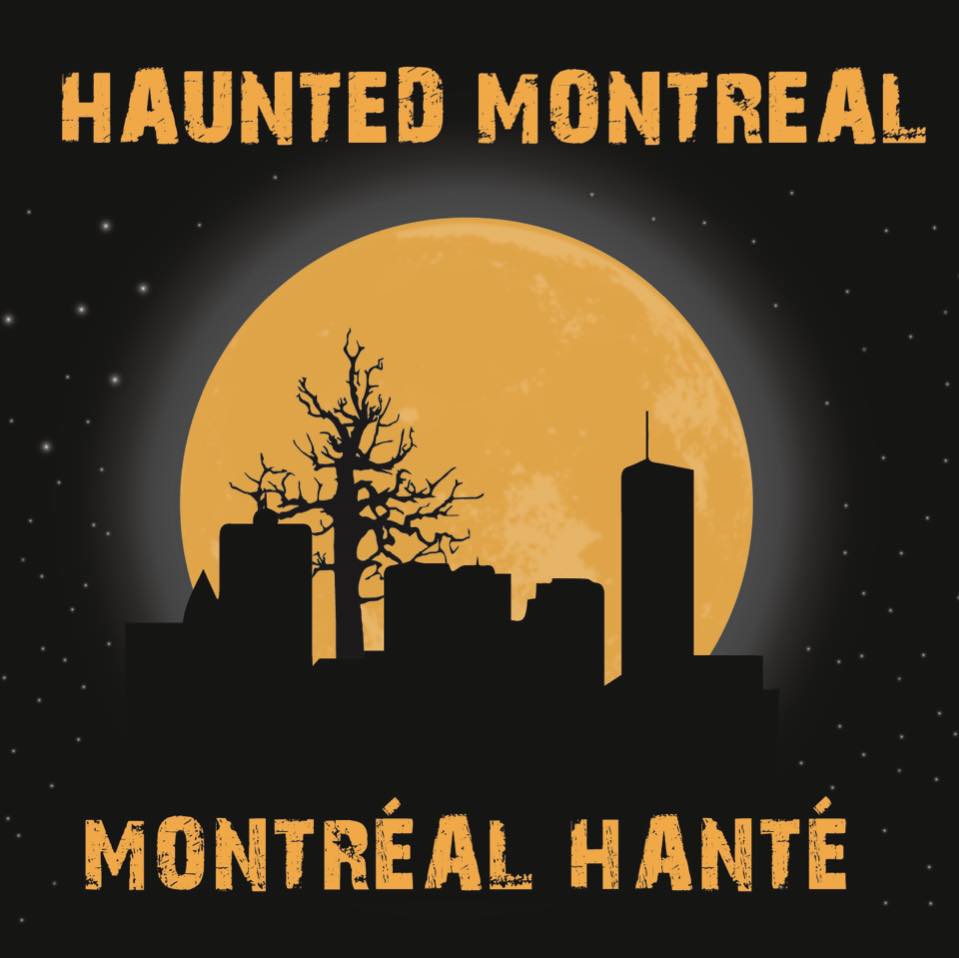
Lastly, we now have an online store for those interested in Haunted Montreal merchandise. More details are below in our Company News section!
This month we examine the Parc des Vétérans, a haunted location at the foot of the Jacques Cartier Bridge on the Montreal span.
Haunted Research
At the Montreal entrance span to the Jacques Cartier Bridge lies a relatively non-descript greenspace called the Parc des Vétérans. Criss-crossed with busy and winding highway ramps, the park also serves local residents with sporting facilities and a chalet. While it is not Montreal’s most pleasant park, many local residents appreciate it nonetheless in an urban area with few greenspaces.

Some of the features include a basketball court, a rink for roller-blading and winter skating, playgrounds for children and toddlers, a wading pool and a picnic area. According to the City of Montreal: “Parc des Vétérans is a park for relaxing, taking in the natural scenery and enjoying outdoor activities.”
However, according to some local residents the Parc des Vétérans is anything but relaxing – due to incessant paranormal activity and ghost sightings in the greenspace.
One resident, who moved to the Centre-Sud area a few months ago, has had some disturbing experiences in the park. She told Haunted Montreal: “My cats have been traumatized and I have heard unreal things. I am not from this part of town but have lived here since June, and many things that I have heard or felt are not normal to me.”
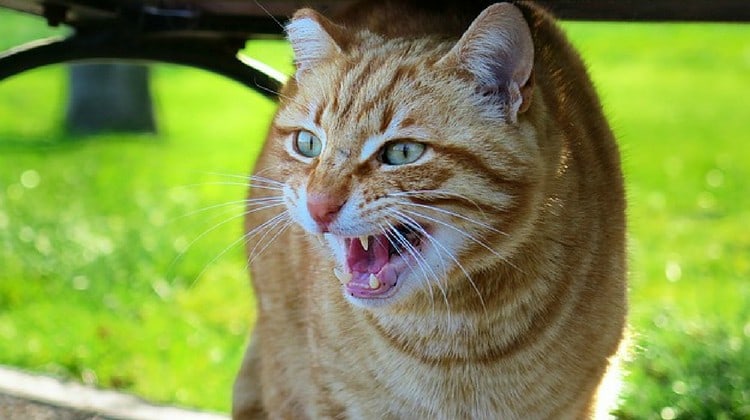
Another local, who lives across Papineau Street from the Parc des Vétérans explained: “Sometimes at night, all of the local dogs start howling or whining at the same time. When I look out my window, I often see a ghost wandering through the park. This I swear upon. He is definitely a male ghost in older clothing and seems to wander aimlessly, as though he is sad or lost. To make matters worse, a hangman’s noose dangles around his neck. He usually disappears after ten or twenty seconds, then the dogs gradually calm down. Over the years, I have heard rumors that the park was built on an old British military cemetery. That is why it is called the Parc des Vétérans.”

In 1814, the Papineau Military Cemetery was opened for the burials of British soldiers. The following year, on the northern section of the same plot, St. Mary’s Burial Ground was established for non-military Protestants. During the decades when the two cemeteries operated, over 1,000 soldiers and their families were interred there.
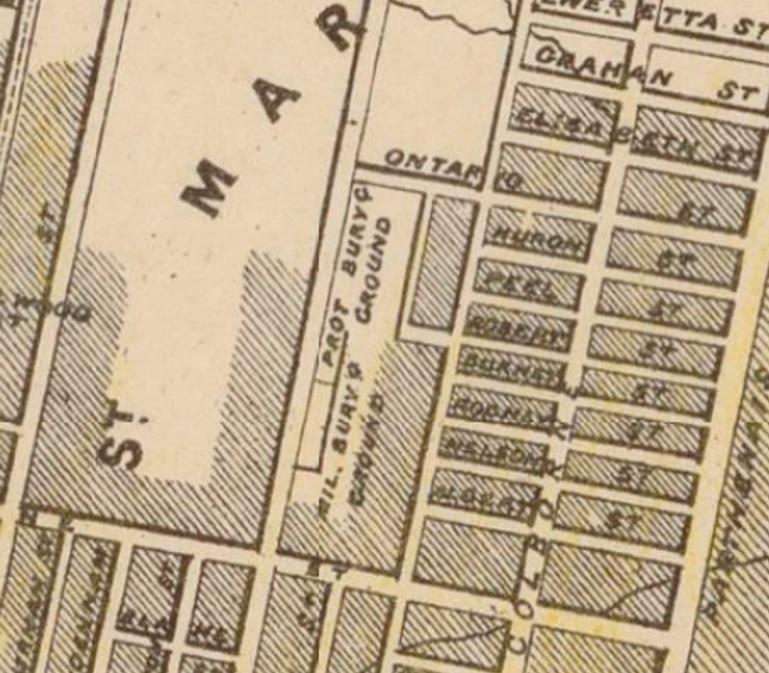
Burials included British soldiers who fought in campaigns in Canada and around the world dating back to the 18th century. These military interventions include the Fenian Raids, the Napoleonic Wars and the War of 1812. The most famous soldier to be interred was Sir Benjamin D’Urban, commander of the British Forces in North America.
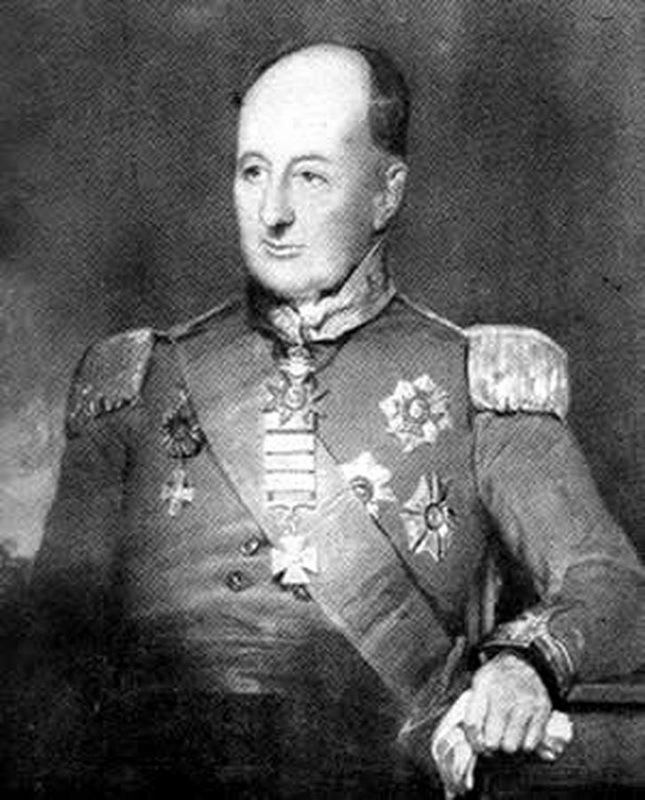
He died in Montreal in 1849 after collapsing into his bed at the hotel where he was headquartered to quell local unrest.
This General is mostly remembered for his frontier policy as governor in the Cape Colony (now South Africa). When stationed there, he use military force to brutalize local populations which opposed colonialism. Notably, he butchered and drove away the Xhosa people and then annexed their territory for the British Empire.
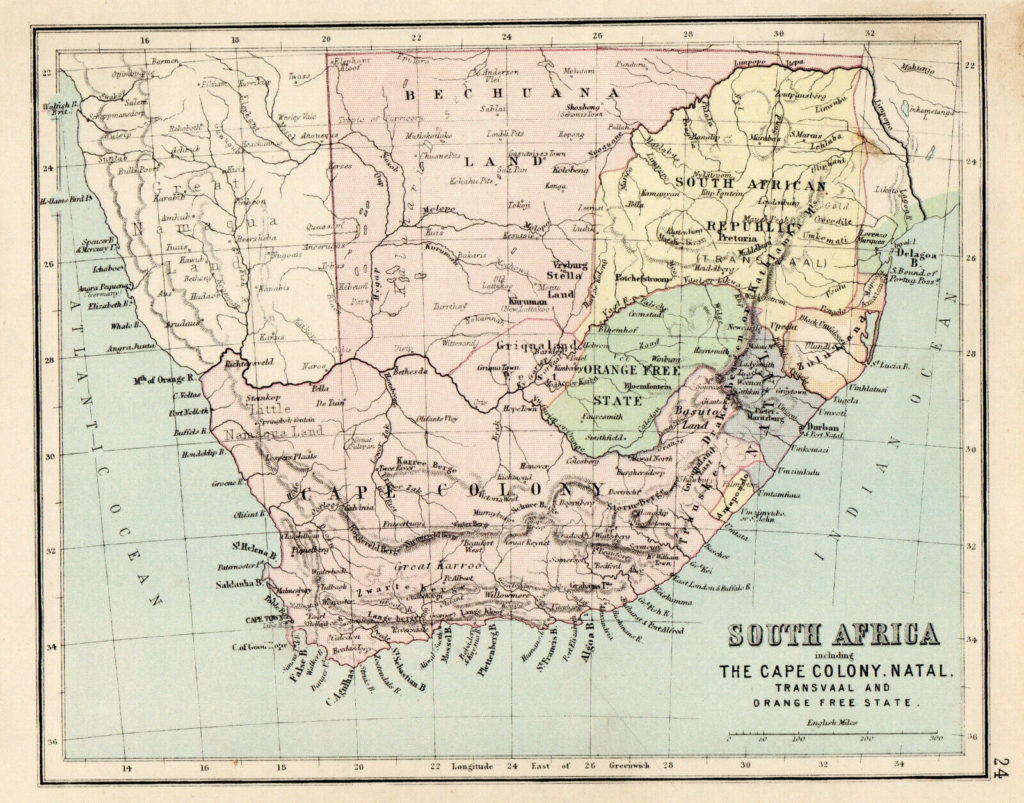
Despite these colonial crimes against humanity, the South African city of Durban was named in his honour.
In Montreal, on the other side of the Atlantic Ocean, at Montreal’s Papineau Military Cemetery a tall and imposing obelisk was erected over his grave.
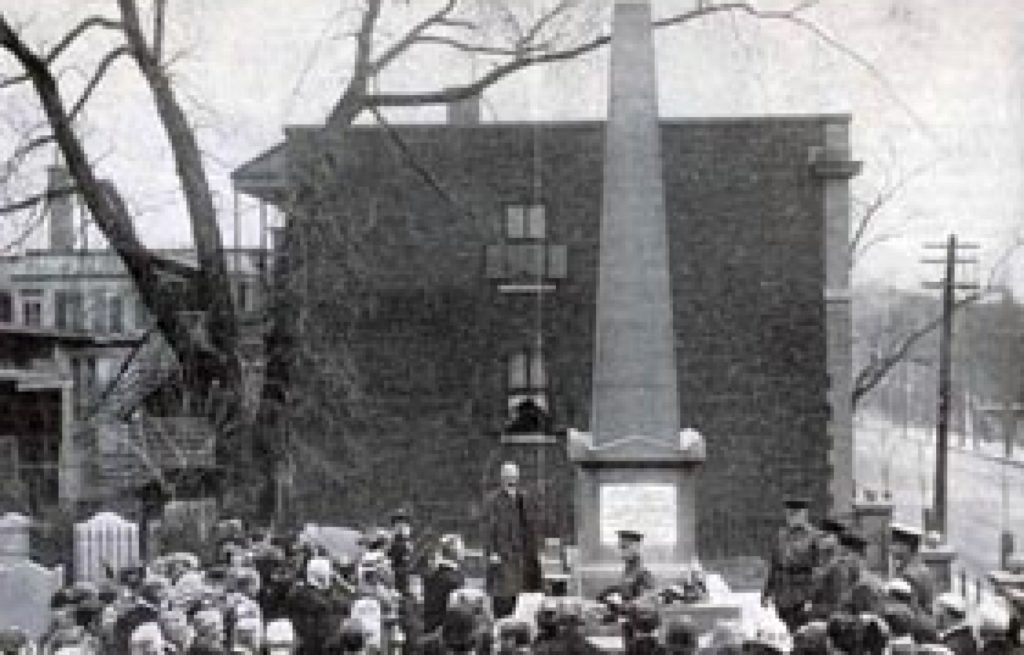
One of the strangest interments at Saint Mary’s Burial Ground was that of Patriote Charles Hindelang. Born in Paris, Hindelang was a Calvinist who took part in the French Revolution of 1830, in which he became an officer.
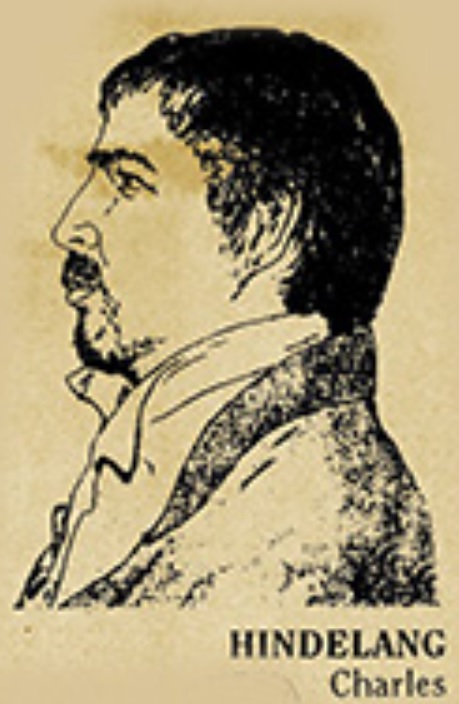
He came to the Americas to do commerce, but was recruited by rebel Ludger Duvernay in the United States to join the Lower Canada Rebellion of 1838 against British rule.
Hindelang fought at the Battle of Odelltown within the Patriote ranks, which was the last battle of the conflict.
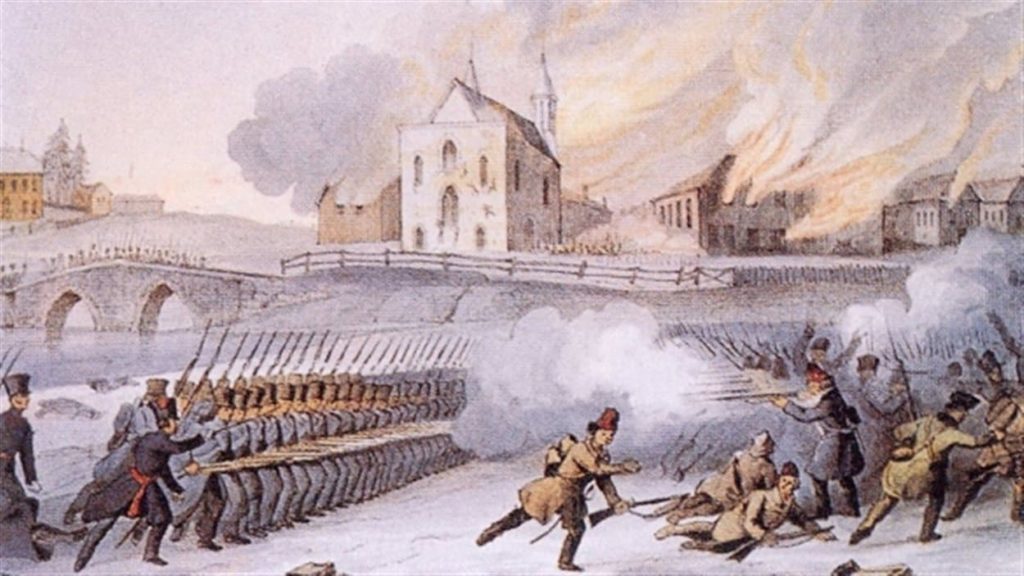
The Patriotes were defeated and Hindelang was arrested as he attempted to flee back to the United States. British authorities sentenced him to death at the gallows.
On February 15, 1839 Hindelang was hanged at the Pied-du-Courant Prison in Montreal along with his compatriots. His last words were: “My last goodbye is the old cry of France: Long live freedom! (Vive la liberté!)”
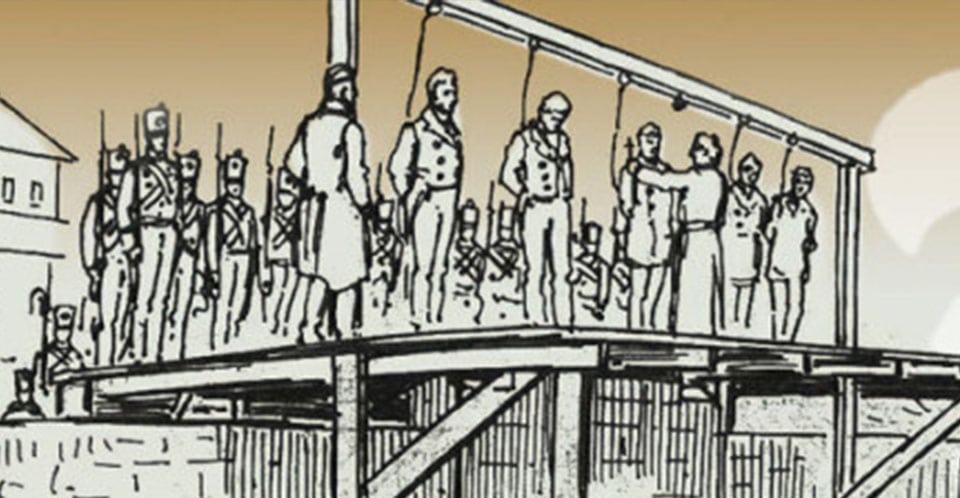
While all of the other executed Patriotes were buried in Saint-Antoine Catholic Cemetery, Hindelang ended up in Saint Mary’s Burial Ground because of his Protestant background. Ironically, he was buried close to the Papineau Military Cemetery, not far from the very British soldiers he had fought against.
In 1869, the burial grounds stopped receiving corpses because the British military departed from the newly-founded “Dominion of Canada”.
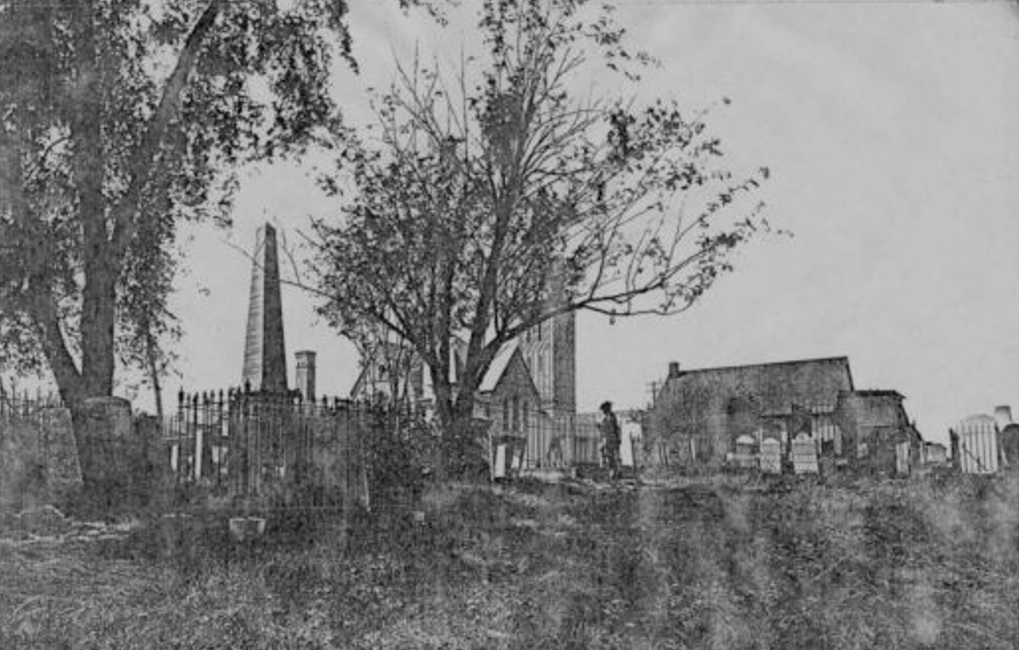
The land was expropriated in 1876 to erect a hospital for people suffering from contagious diseases. This improvised facility was constructed over the cemeteries.
In the early 20th Century, proposals were put forth to convert the old burial grounds into a park. Tombstones were deteriorating as vandals toppled and desecrated them. A Montreal newspaper reported in June, 1912 that the “boneyard had become the resort of idle men and boys, stray dogs and cattle”. It became necessary to station police officers on the burial grounds around the clock to protect the graveyards from further desecration.
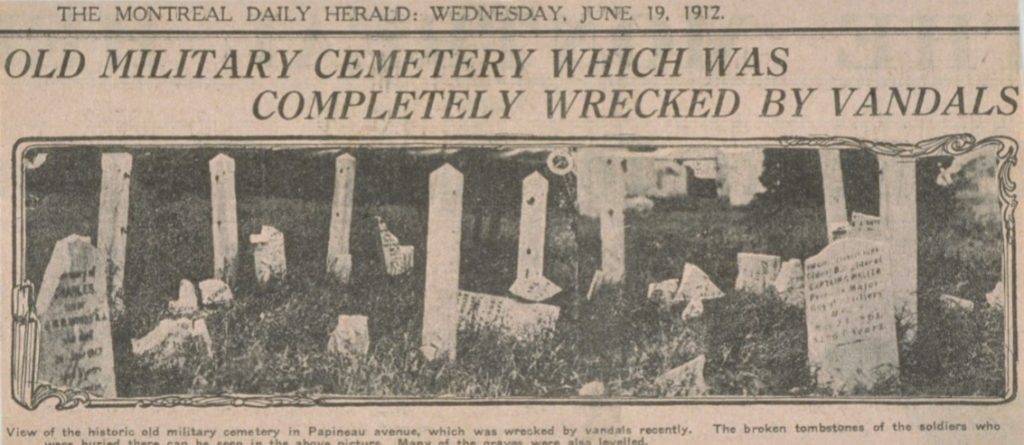
Furthermore, sometimes bodies were unearthed accidentally. According to historian and journalist Robert N. Wilkins:
“An acquaintance recently told me that when he was a child growing up in a tenement at the foot of the Jacques Cartier Bridge, he witnessed the accidental unearthing by road workers of a coffin just south of Malo Street. The astonished labourers, having completely extracted the casket, called the authorities, who rapidly arrived to remove this unexpected legacy from Montreal’s past.”

Finally, in 1944 that the City of Montreal purchased the land for $35,000 to complete the conversion of the cemeteries into a park. With the construction of the Jacques Cartier Bridge happening, some of the land was needed for the roads and ramps leading to the span.
A plan was hatched to relocate the military burials to the National Field of Honour, in the West Island suburb of Pointe Claire. During a five-day period, the remains were exhumed and the headstones were transferred to the National Field of Honour.
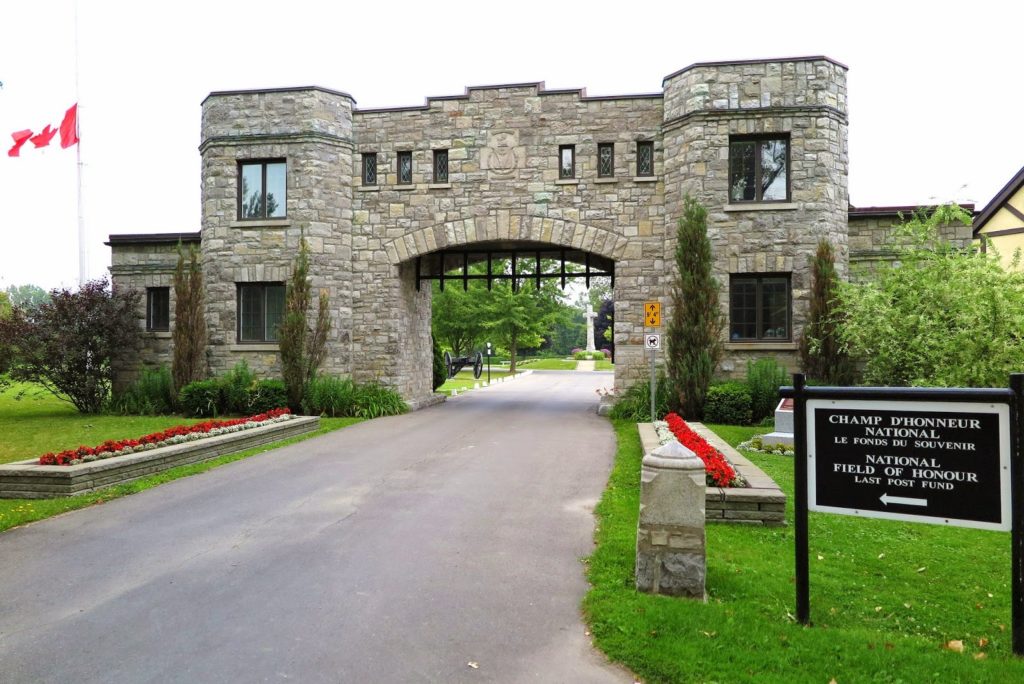
This ceremony, with full military honours, was overseen by the Last Post Fund. The organization is dedicated “to ensure that no Veteran is denied a dignified funeral and burial, as well as a military gravestone, due to insufficient funds at the time of death”.
Of the 1,797 burials, only 54 headstones could be salvaged. These were placed around the newly-created D’Urban Circle, which features the General’s obelisk in the centre. The transfers were completed to Pointe Claire’s Le Champ d’honneur Cemetery on July 21, 1944.
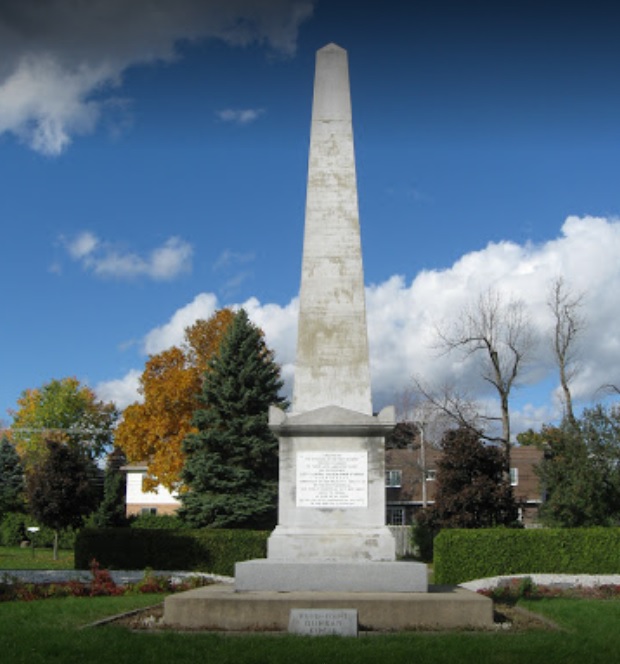
The remaining bodies in St. Mary’s Burial Ground were left in place, including that of Charles Hindelang. Following the construction of the entrance ramps to the Jacques Cartier Bridge, motorized road traffic began rolling over the Dead.
Today, the Parc des Vétérans has a lot more rolling over the old cemeteries than the cars and trucks coming on and off the Jacques Cartier Bridge. In addition to rollerbladers using the rink, in 2021 the City of Montreal announced an event called “Pumptrack au parc des Vétérans”.
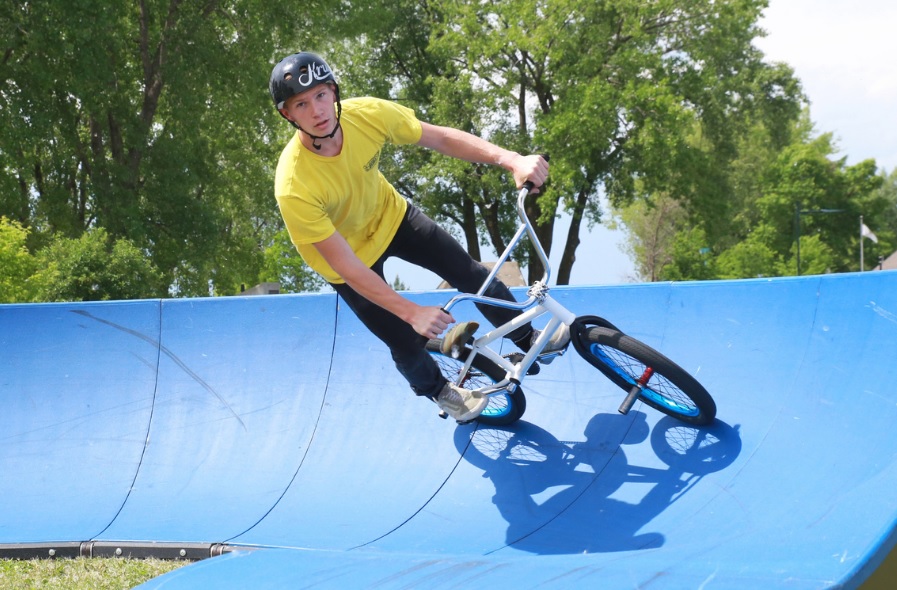
Running from September 8 – October 4, 2021, the “Pumptrack” event featured “a course made up of a series of bumps and turns to be tested by bike, skates or scooters.”
The City of Montreal laid out a 49-meter loop and invited everything from BMX bicycles, skateboards, scooters and even Go-Karts to roll over the old burial grounds.

What the City of Montreal does not realize is that the Dead do not like to be disrespected. Generally, they just want to Rest in Peace. The paranormal activity and ghost sightings in the Parc des Vétérans is likely related to all of the desecration and ongoing disrespect for those still buried there.
The most prominent theory about the ghost haunting the park is that he is none other than French Revolution hero and Patriote Charles Hindelang. Instead of being transferred to the National Field of Honour, like General D’Urban, his corpse was left abandoned and unmarked.

Ironically, colonial British soldiers are still honoured today, despite their history of brutality, genocide, land-theft and the execution of adversaries.
Meanwhile, many of those who fought for freedom and liberation, like Charles Hindelang, remain in unmarked graves. The fact that leaders of the City of Montreal, past and present, have invited all sorts of traffic to roll over the Dead can only be described as deranged.
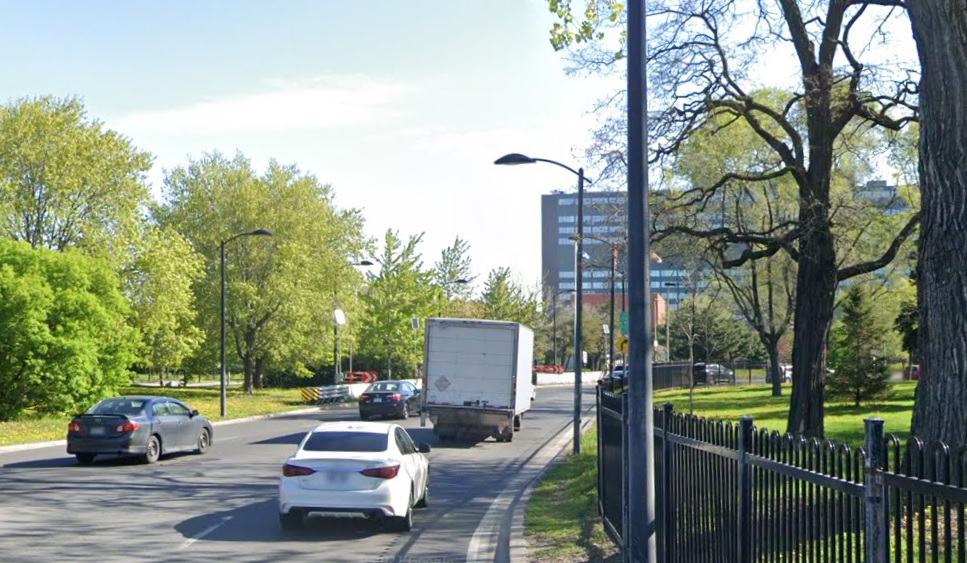
The poor corpses lying in the old cemeteries on Papineau Street have to constantly deal with cars, trucks, busses, BMX bicycles, roller-blades, skateboards, electric scooters and Go-Karts constantly rumbling just six feet above their final resting place.
These most unfortunate circumstances are likely the reasons why the Parc des Vétérans is so very haunted. Enter at your own risk!
Company News
Haunted Montreal is thrilled to announce that for the Hallowe’en Season we are offering all of our outdoor haunted experiences:
The Haunted Downtown Ghost Walk
The Haunted Mountain Ghost Walk
The Haunted Griffintown Ghost Walk
Paranormal Investigation in the Old Sainte Antoine Cemetery
The Hallowe’en Season schedule is here:
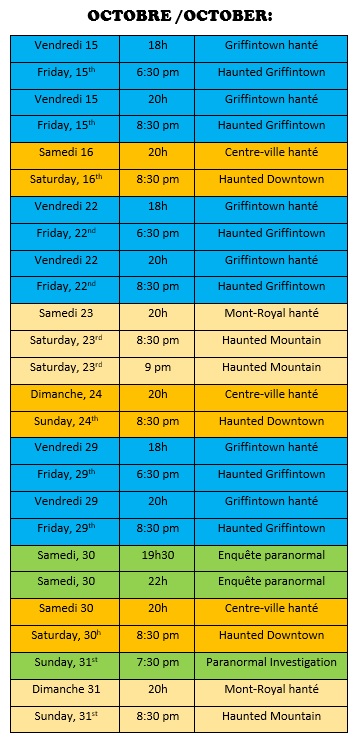
Both public and private tours are available!
For private tours, clients can request any date, time, language and operating tour. These tours are based on the availability of our actors and start at $170 for small groups of up to 7 people.
Email info@hauntedmontreal.com to book a private tour!
We are also offering our Virtual Ghost Tour on demand in both English and French.
Please spread the word to those who might be interested in a Haunted Montreal experience!
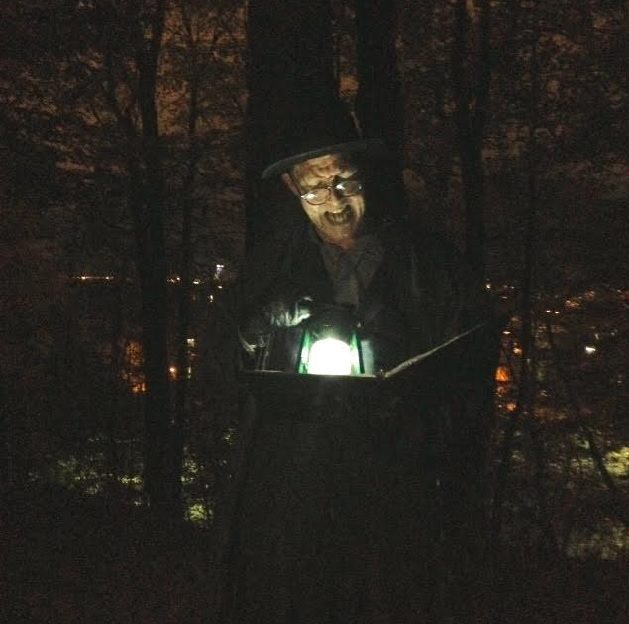
Finally, we have opened an online store for those interested in Haunted Montreal merchandise. We are selling t-shirts, magnets, sweatshirts (for those haunted fall and winter nights) and mugs with both the Haunted Montreal logo and our tour imagery.

Purchases can be ordered through our online store: shop.hauntedmontreal.com
Haunted Montreal would like to thank all of our clients who attended a ghost walk, haunted pub crawl, paranormal investigation or virtual event during the 2020 – 2021 season!
If you enjoyed the experience, we encourage you to write a review on our Tripadvisor page, something that helps Haunted Montreal to market its tours.

Lastly, if you would like to receive the Haunted Montreal Blog on the 13th of every month, please sign up to our mailing list.
Coming up on November 13: Quai de l’Horloge
Clock Tower Quay is a popular tourist destination in the Old Port of Montreal, especially following the installation of an urban beach in 2012. Overlooking the deadly St. Mary’s Current, it is an ideal place to spend a sunny afternoon. However, several people have spotted wet footprints on the quay – even on the hottest days when water evaporates very quickly. Could these paranormal prints be related to a maritime disaster from the city’s distant past?

Donovan King is a postcolonial historian, teacher, tour guide and professional actor. As the founder of Haunted Montreal, he combines his skills to create the best possible Montreal ghost stories, in both writing and theatrical performance. King holds a DEC (Professional Theatre Acting, John Abbott College), BFA (Drama-in-Education, Concordia), B.Ed (History and English Teaching, McGill), MFA (Theatre Studies, University of Calgary) and ACS (Montreal Tourist Guide, Institut de tourisme et d’hôtellerie du Québec). He is also a certified Montreal Destination Specialist.


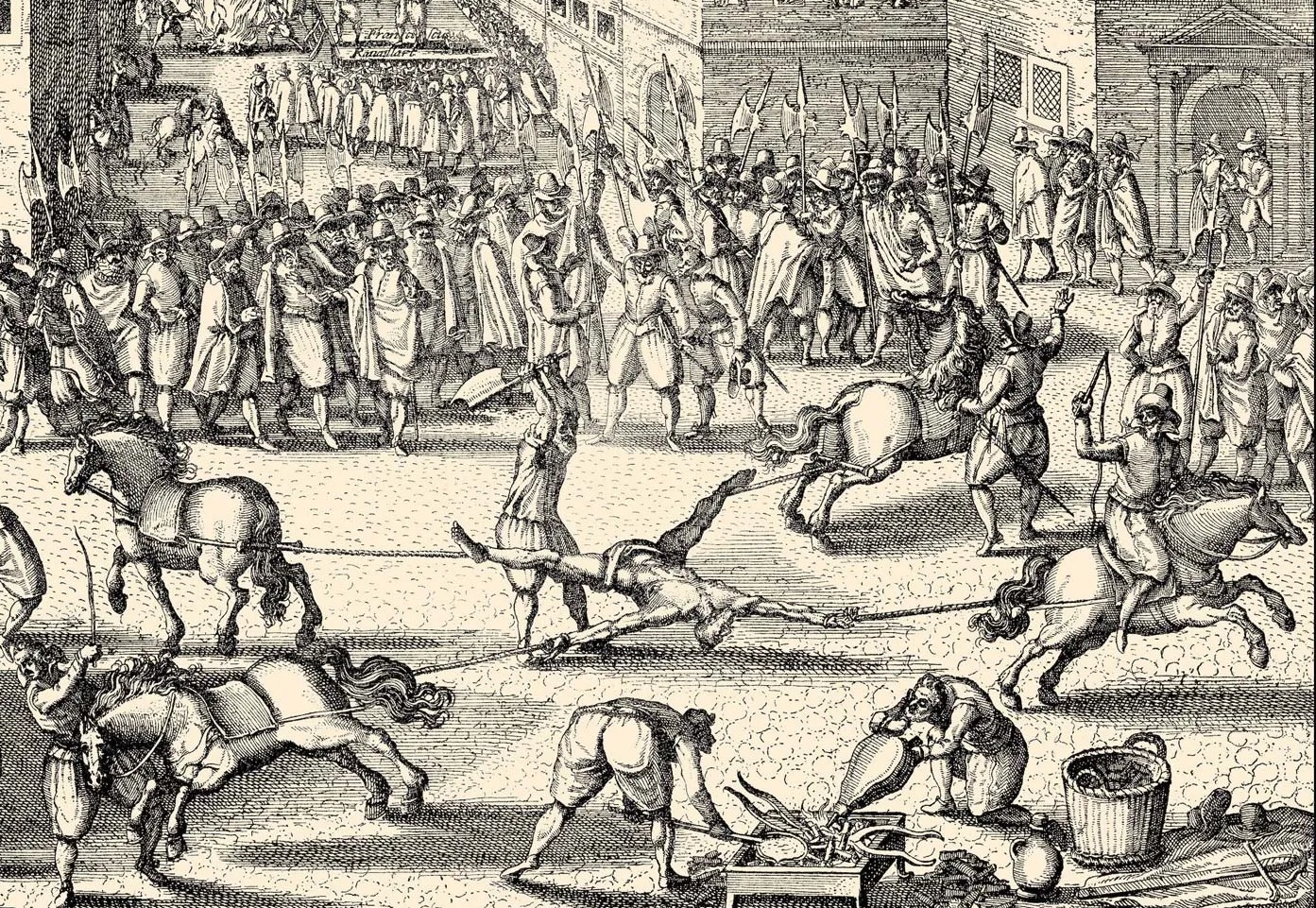

Comments (0)